
Datenrekorder (DR 1535)
Ser. No. 108107745
Starting point
From the outside this Noris Data Datenrekoder DR 1535 looks to be without any physical or mechanical damage. All buttons appears to be mechanical functioning. It is very dirty and / or spotted yellowed (I am not really sure what is dirt and what is yellowing). There are some tape (not not cassette tape ! - normal tape) residue on the outside, and there is a small home made sticker saying "OPP" in Norwegian (which is "UP" in English). I have no idea if this datasette (or Datenrekorder as they call it) works or not, but I have high hopes that it can be refurbished at least.
Below are some pictures of the datasette before refurbishment.


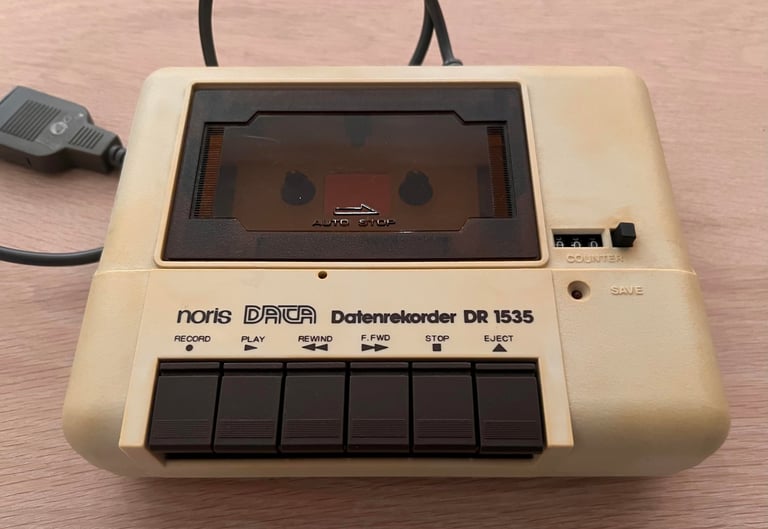

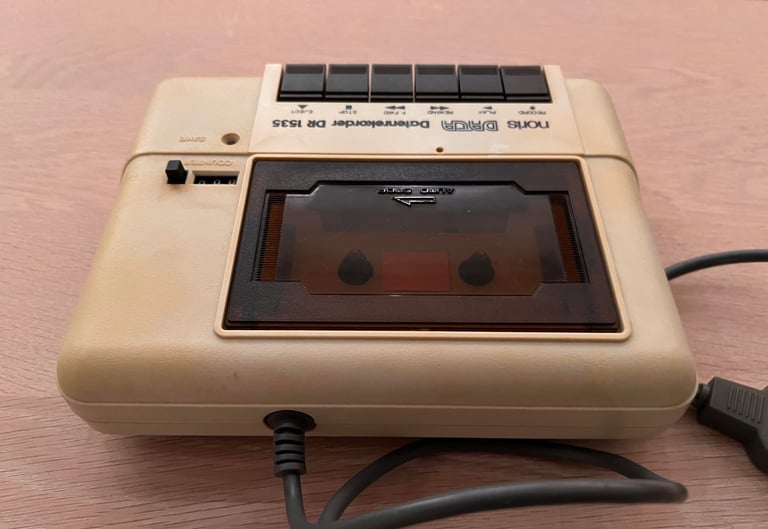

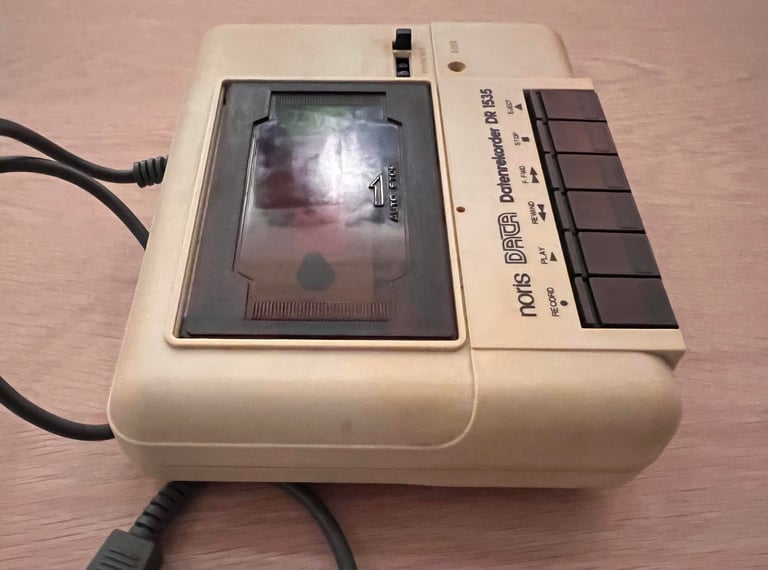

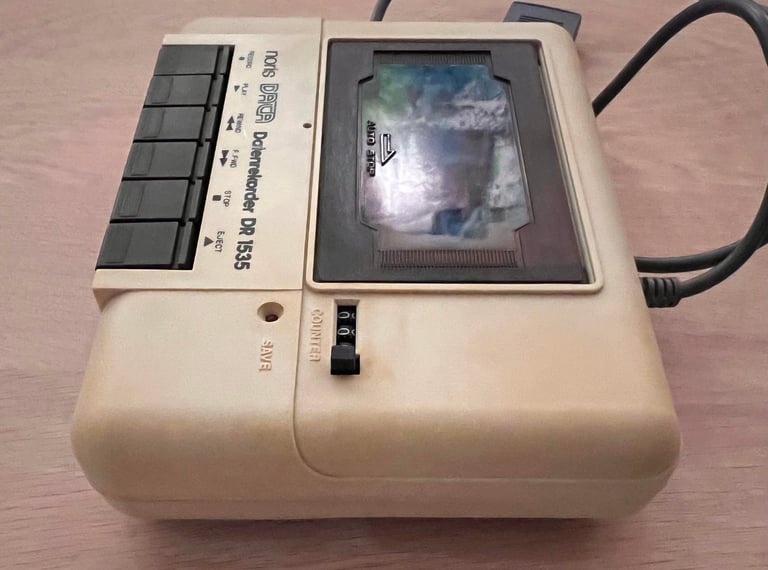

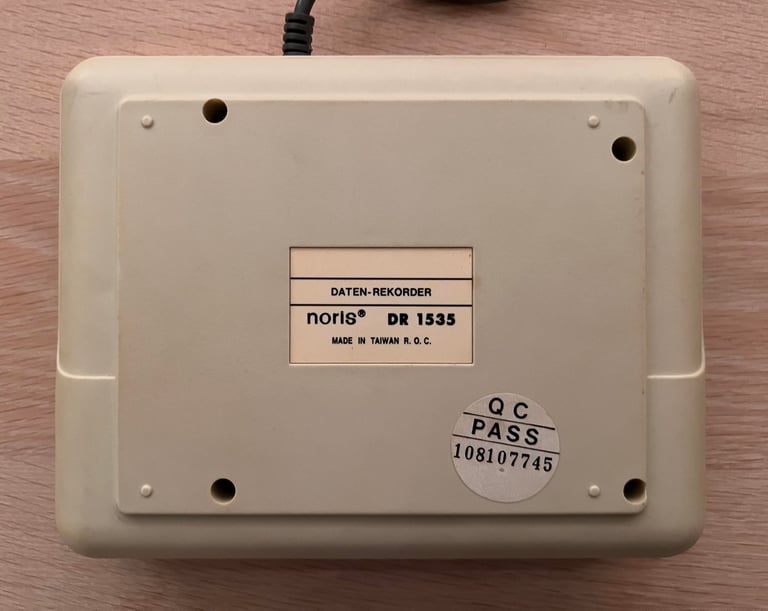

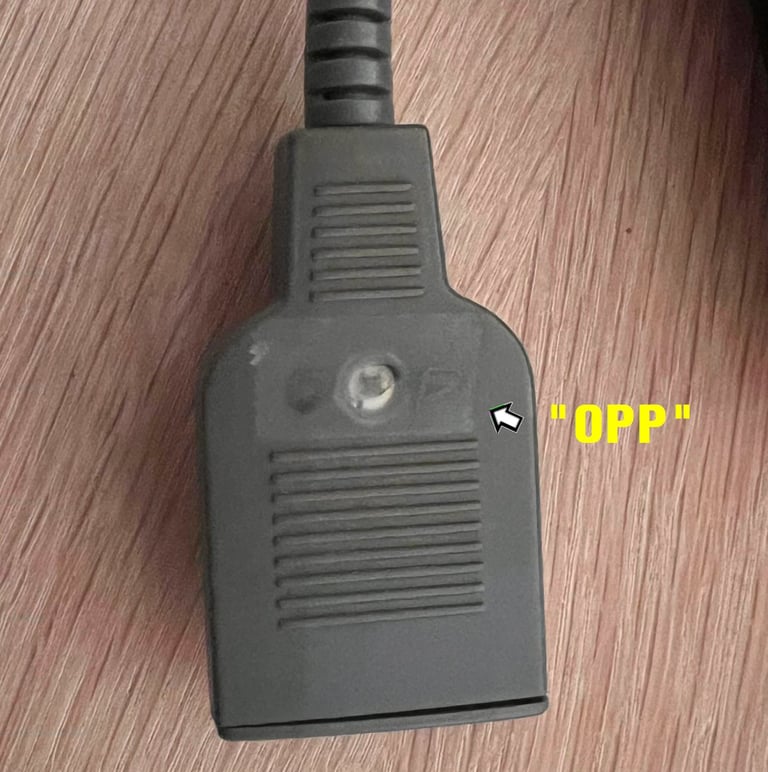

Refurbishment plan
To refurbish this DR 1535 datasette the plan is to:
- Clean and remove stains from exterior casing
- Clean the interior mechanics
- Check cable and replace strain relief
- Check PCB for corrosion and replace old electrolytic capacitors
- Check, and if required, replace motor- and counter belts
- Check, and if necessary, adjust R/W head for optimal tape reading
- Check, and if necessary, adjust motor speed for optimal tape reading
- Verify datasette operation by testing
Note that these steps are not necessarily done in the order described above, and several of these steps are done in parallell.
Initial testing
Before the refurbishment commence a quick initial test of the datasette is performed.
As can be seen from the table above the datasette is not working. When pressing PLAY nothing happens (tape is stuck), but when pressing FF/REW the datasette operates normally.
Opens it up...
The exterior casing consists of a top- and bottom cover held together by four screws. These four screws are removed first, and the bottom cover is lifted from the datasette.

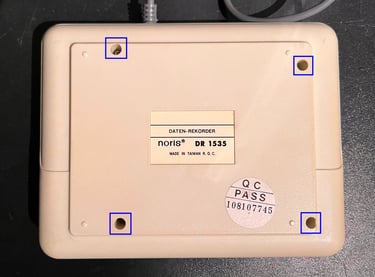
The bottom cover is somewhat dirty, but this is normal. Gravity can´t be avoided even in a datasette, so all dust falls to the bottom. Nevertheless, the bottom cover seems to be without any damage.
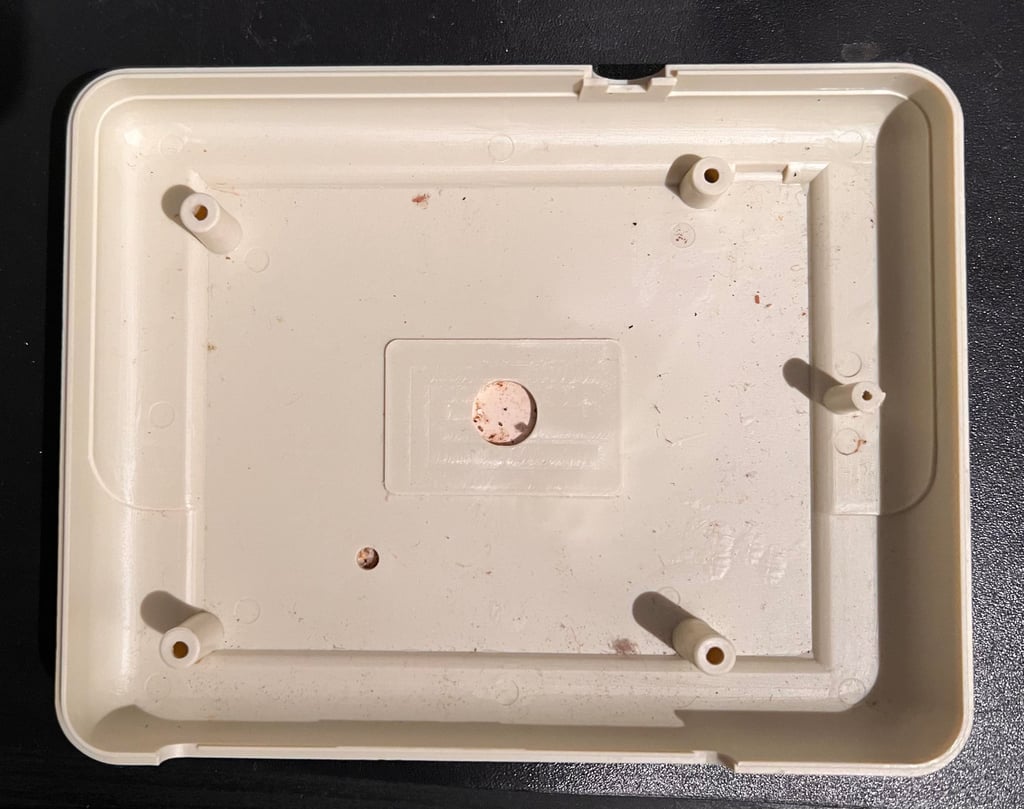

Back of the interior mechanics looks incredible clean (!) Very little dust and grease as far as I can see, and the PCB looks also to be in very good condition. But I am very surprised to see that the belts are looking very good. Since the datasette failed most of the initial testing, I was expecting to see a worn out motor belt. But that is not the case. In fact, the motor belt appear to be in very good condition, with the right firmness and elasticity.

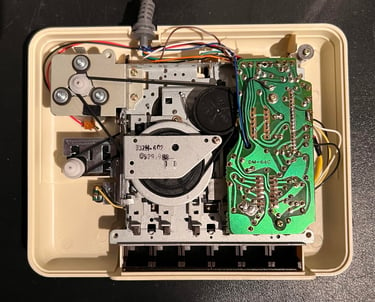
To remove the whole interior mechanics from the top cover is easy: just lift it straight up. No screws needs to be removed. This reveals now both the top cover and the top of the interior.


The front of the interior is more dirty than the back (which is natural). But also here I am struggling to see any immediate cause why the datasette would fail due to the reels not rotating. All belts appear good and I can not see any immediate issues with the mechanics. As with the bottom cover, the top cover also is in good condtion. A bit dirty, but otherwise undamaged.

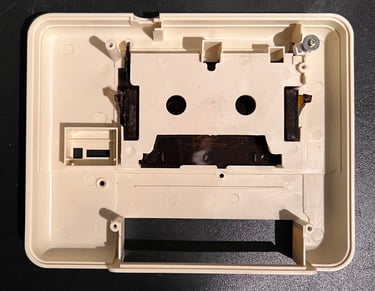
Although not strictly required, it is good practice to remove the keys. To do this the shaft needs to be removed. The e-clip is removed with a small flat screwdriver (see picture below) and then the shaft is carefully pulled out.

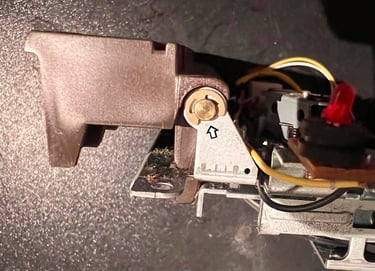
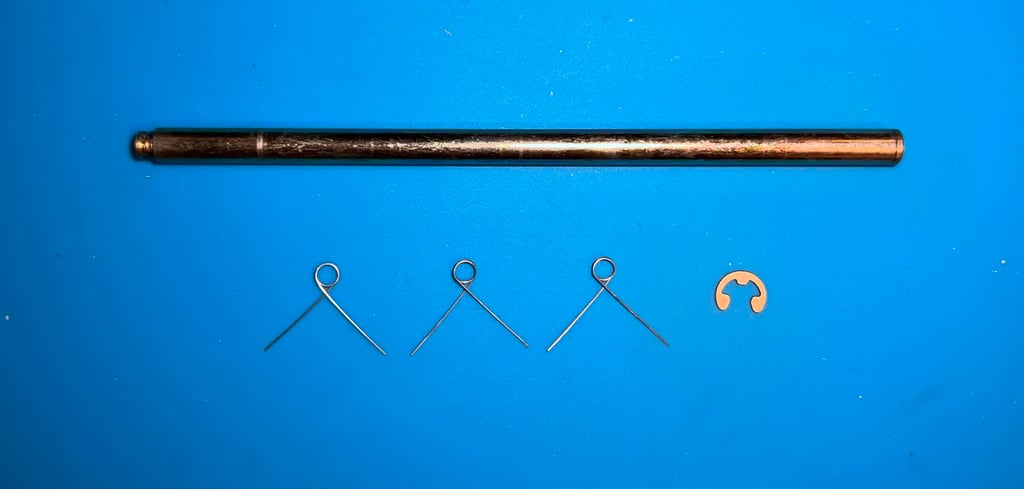

The shaft, e-clip and the three springs from the rear of the interior are cleaned with some isopropanol.
All the keys are soaked in mild soap water for about 12 hours. They were not very dirty, but it is good to clean them anyway after 30+ years.

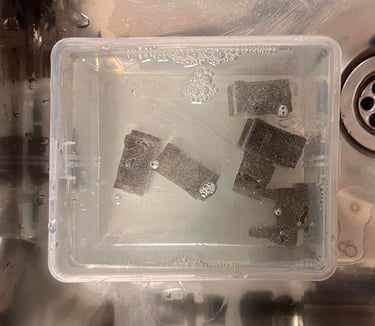
Exterior casing
Holy moly... even if the top- and bottom cover are undamaged with no broken parts, it is extremely dirty. And there are several discoloured spots all around the casing. I am not really sure that retrobrighting can deal with such severe irregular yellowing, so this will be an interesting experiment.
The tape lid is removed from the top cover. To remove the lid the screw, spacer, spring and plastic part needs to be removed first. See pictures below.




By carefully pushing the plastic tabs on each side of the tape lid while lifting it from the top cover the lid is released. Keep in mind that these plastic parts may be brittle do to old age so it is important to be gently not to break anything.
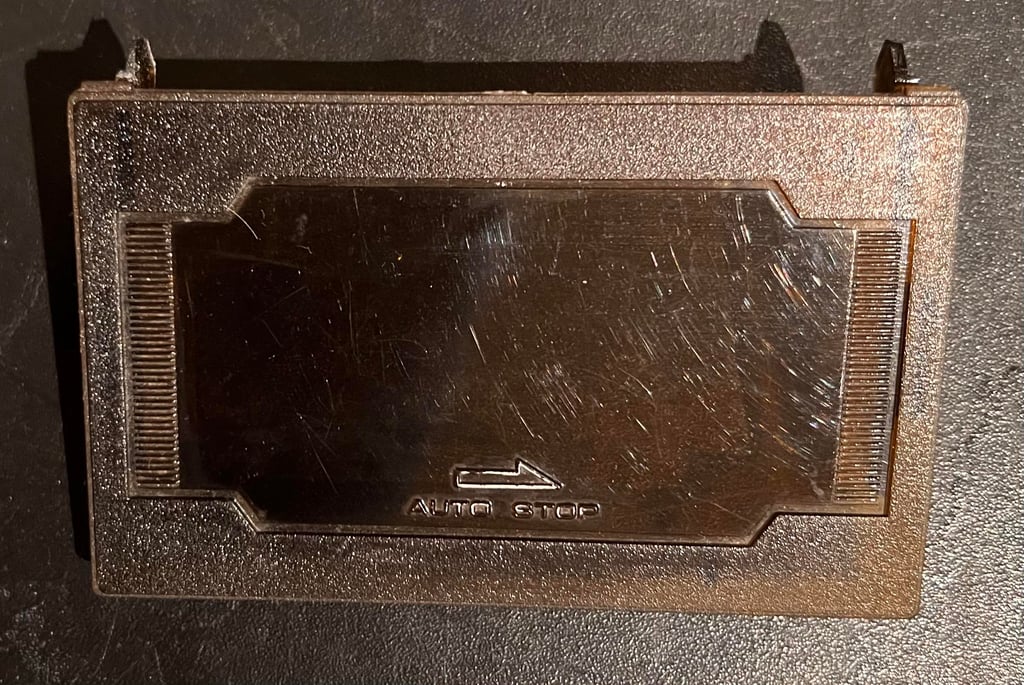

Before cleaning the covers, the stickers are removed. By adding some hot (h)air from a hair dryer two of the stickers are carefully pried off. But the third sticker, with the serial number, is not possible to remove. The serial number sticker is covered with some plastic tape in an attempt to avoid damaging it during cleaning. There is a risk that this sticker will be destroyed in the process, but the casing needs to be cleaned so I don´t see any other way.
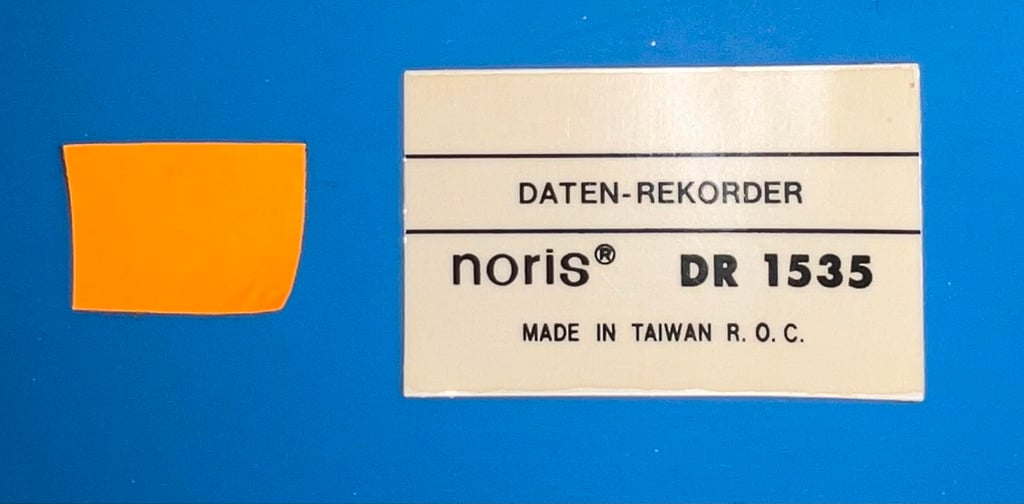

Below is a picture of the top- and bottom cover before cleaning and retrobrighting.

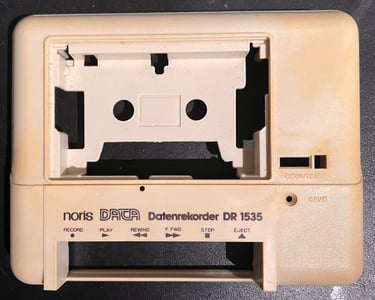
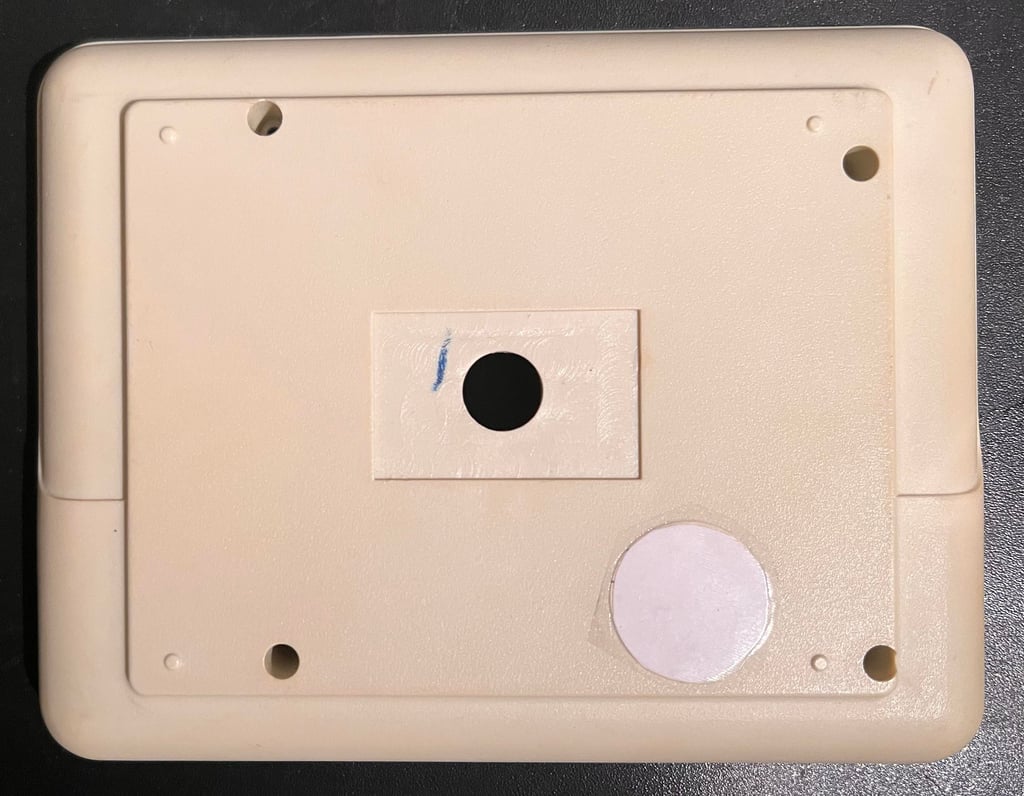

"Here goes nothing!" - after being soaked in mild soap water for about 10 hours, the covers are dried and prepared for retrobrighting. The casings are covered with 12 % hydroperoxide cream and then wrapped in plastic film. Next, they are placed in a UV chamber for about 12 hours. Note that the hydroperoxide cream is re-applied frequently (about every hour). I don´t have too high hopes for the result of this retrobright due to the severity of the yellowing, but I do expect it to be at least better than before.
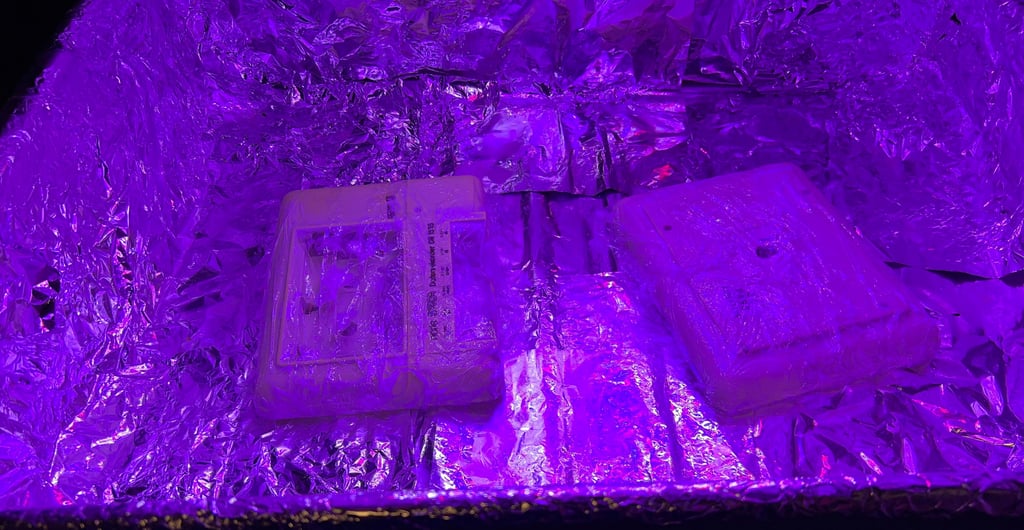

The result is way better than I expected! Most of the discoloration is gone after the retrobrighting - good as new!
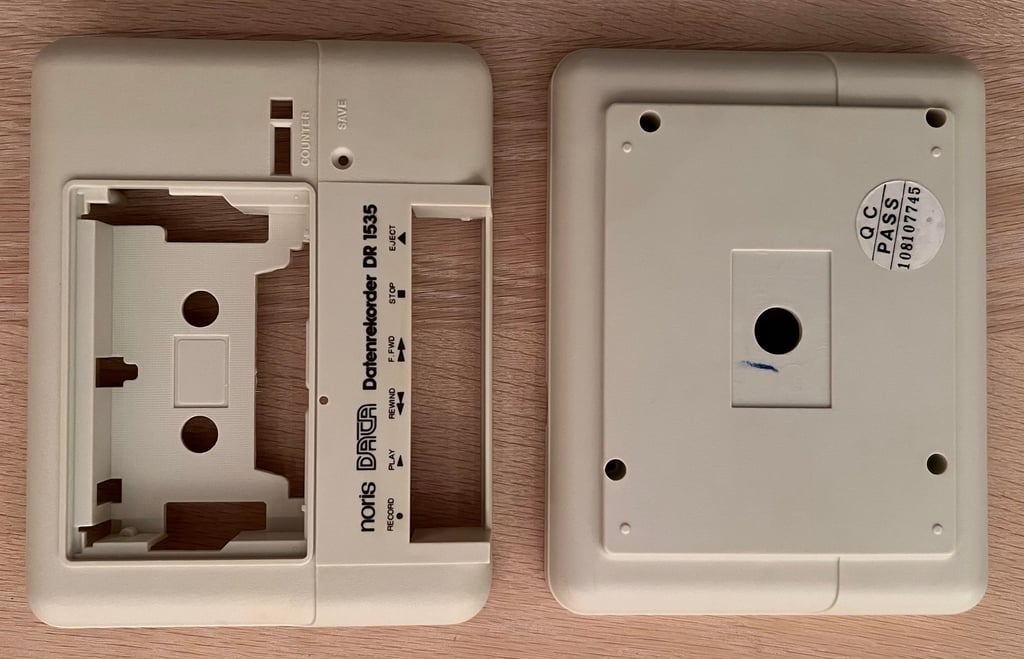

Interior mechanics
I am impressed how clean the interior of this datasette is. Of course, it can have been cleaned previously by someone, but I don´t really think so. My guess is that this datasette has been stored in a bag in a relatively clean room. But there is something I was not prepared for: the interior mechanics is very different from the previous Noris Data Datenrekorder DR 1535 (?). From the outside they are identical, but the inside is not. This one looks quite similar to a traditional Commodore C2N 1530 datasette. Weird... Below are some pictures before cleaning.

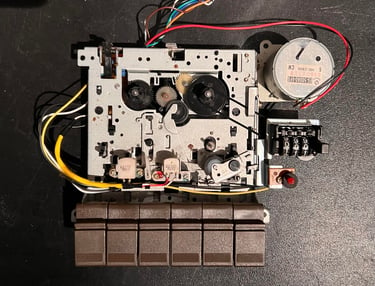
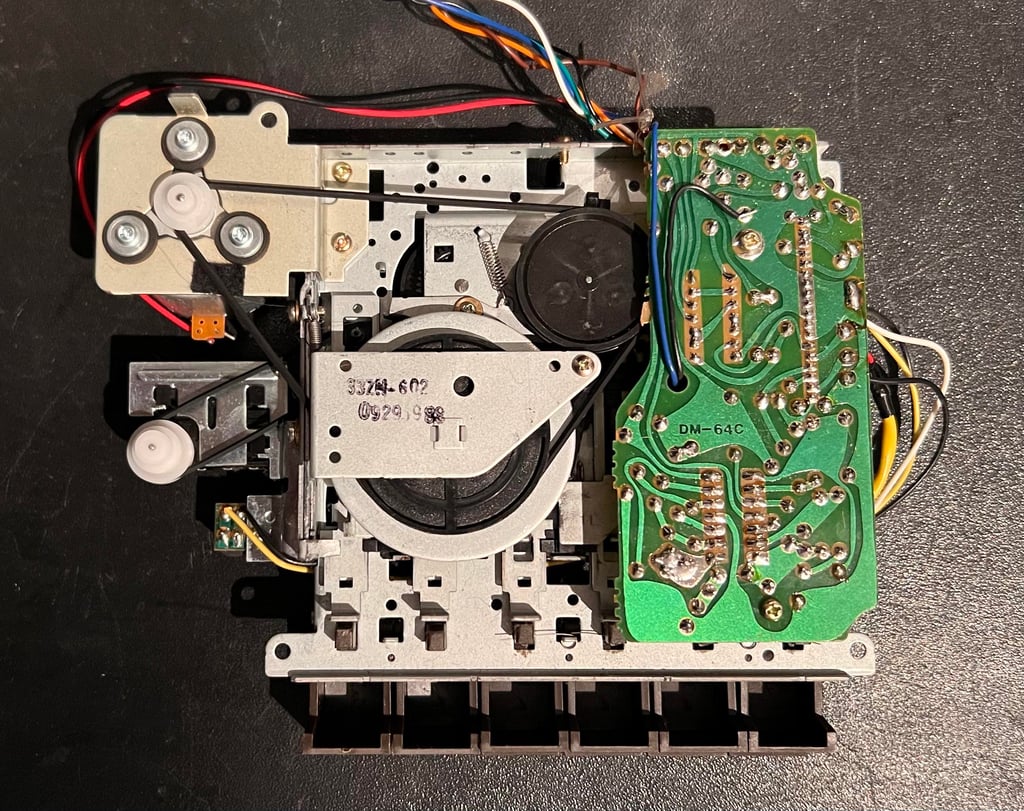

It is not obvious why the PLAY function doesn´t work. All belts seem fine and there are nothing mechanical obstructing the playback. Nevertheless, the interior is cleaned properly with isopropanol and Q-tips. The rear of the interior is cleaned first. There is not much dirt and grease here, but it is good to clean it anyway. Some of the grease is there for a purpose (to smoothen the mechanical operation), and this grease is replenish with new MoS2 grease. Note that the cleaning of the rear is done while the PCB and the motor belt are removed (see later chapters on the removal of these).

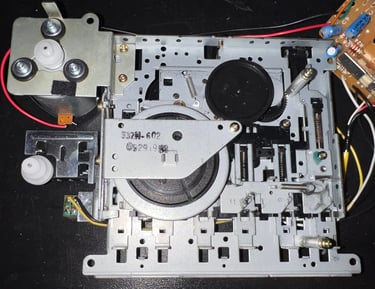
The front side of the interior is also first cleaned with the belts and keys removed. But the last part of the cleaning is done while the belts and keys are in place again. Why? Well, this allows the datasette to be connected to the Commodore 64 and it can be cleaned while rotating parts are - yes - rotating (!). But now something interesting happens... the PLAY function seems to work! Nice! But I have no idea why it failed the first time, but this is a good thing anyway. See small video below for the now rotating take up reel.

A prerequisite for the datasette to operate without errors is that the read/write head, the erase head and the capstan plus pinch roller are clean. If these are not clean you risk that the datasette will have problems reading/writing signals from/to tape - or that the tape "slips" during playback. All of these important components are cleaned thoroughly with Q-tip and isopropanol. A smart way of cleaning the pinch roller and capstan is to do this while the datasette is connected to the Commodore 64. Below is a picture of the cleaned components, and also some videos on how to clean the capstan and pinch roller (from a different datasette).
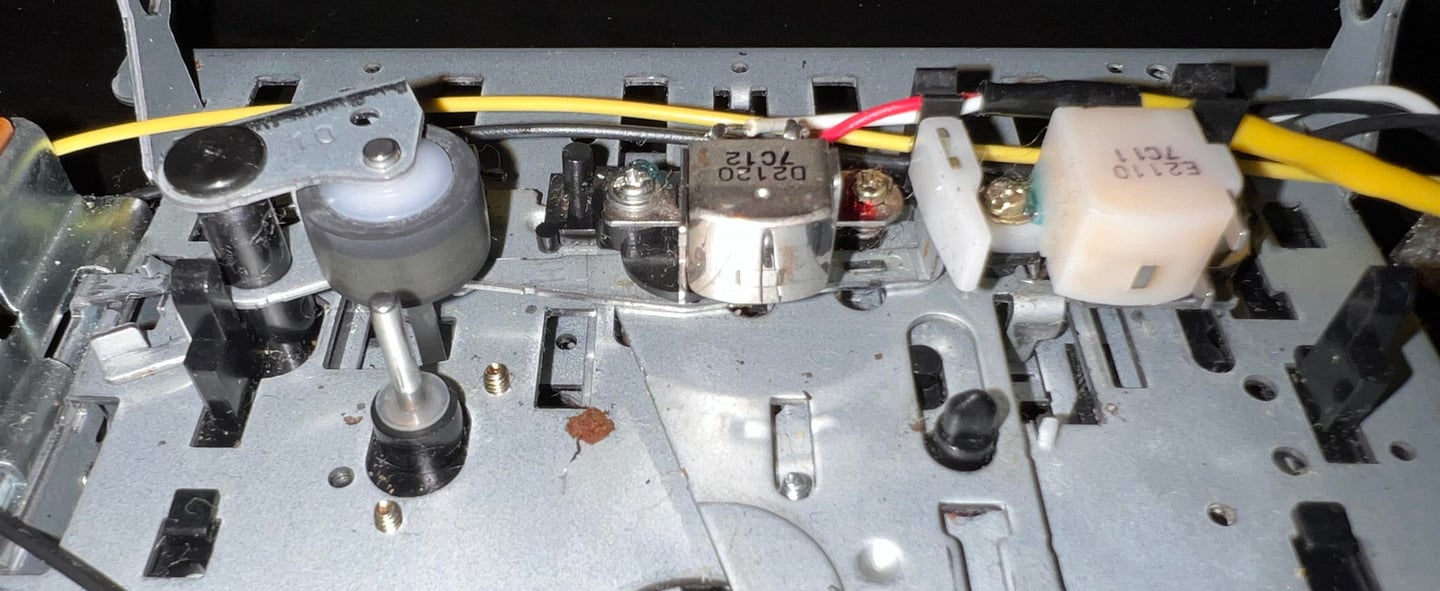



Cable
Both the cable and the connector are in good condition. Since there is a sticker (saying "OPP" (eng. "UP")) on the connector housing it is disassembled, and the plastic casing is placed in mild soap water. There are very little signs of use on the connector, and the metal pins are not significantly oxidized. Nevertheless, the connector is cleaned throughly with contact cleaner and isopropanol. Note that the Datenrekorder doesn´t have an external ground wire unlike the Commodore 1530 (C2N) datasette. And this is actually a good thing as the external ground wire has no function at all with the Commodore 64.

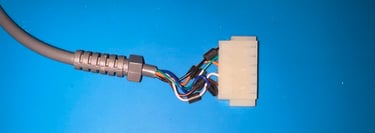
The plastic housing looks good a new after cleaning.

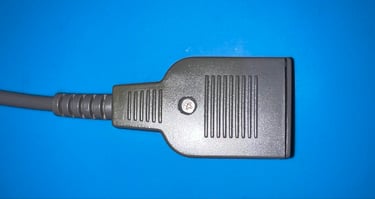
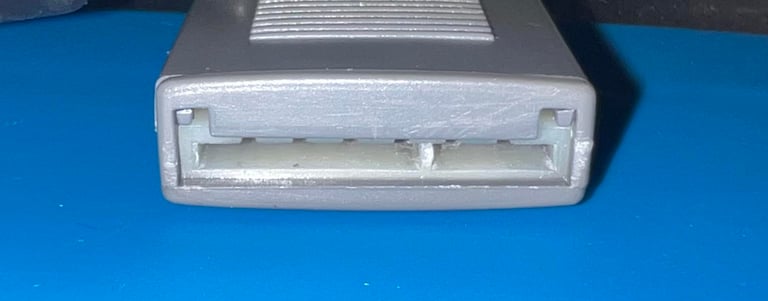

Checking the counter- and motor belt
As previously mentioned the current belts appears to be in good condition. This is quite uncommon, and it makes me wonder if these have been changed at some time. Anyway, the belts are removed from the datasette to check and verify that they are ok. It is also important to remove the belts before cleaning as the isopropanol can deteriorate the belts.
Removing the counter belt is straightforward. The small metal tab is lifted partially and the belt is removed. Note that it is important to be gentle when lifting since there is a spring holding the metal tab in place, and this spring is not designed for heavy movement.
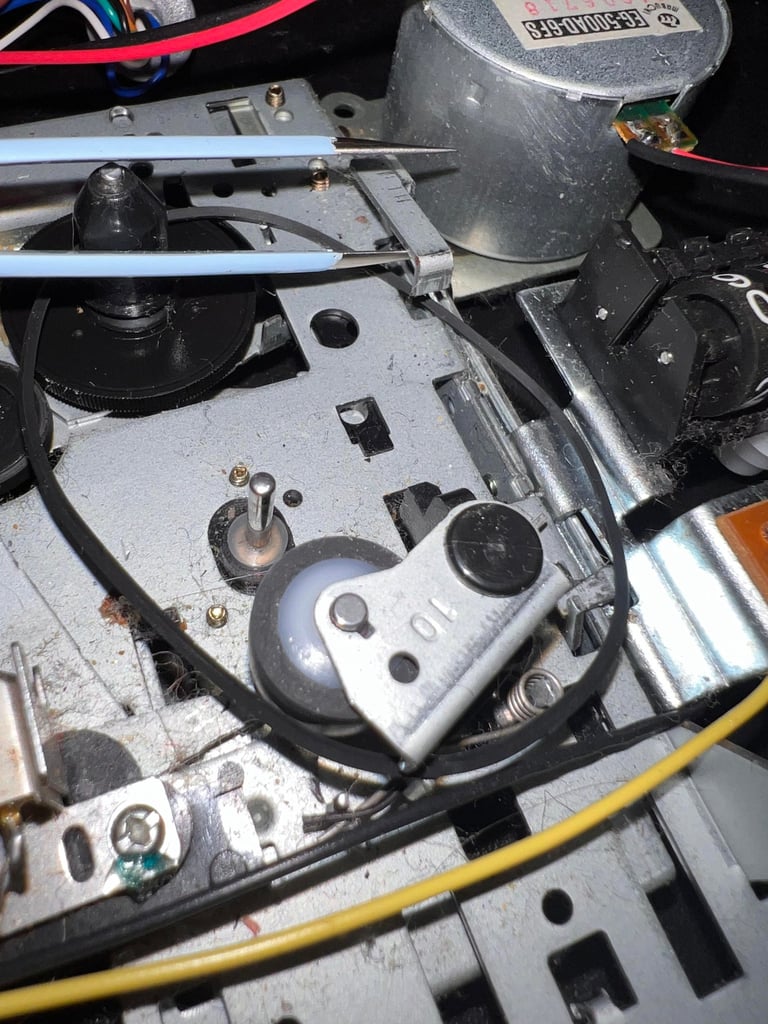

Removing the motor belt is somewhat more complex. Not difficult, but it is good to do this the "right way" so you don´t end up with springs flying around the place. First, the small screw on the side is completely removed.
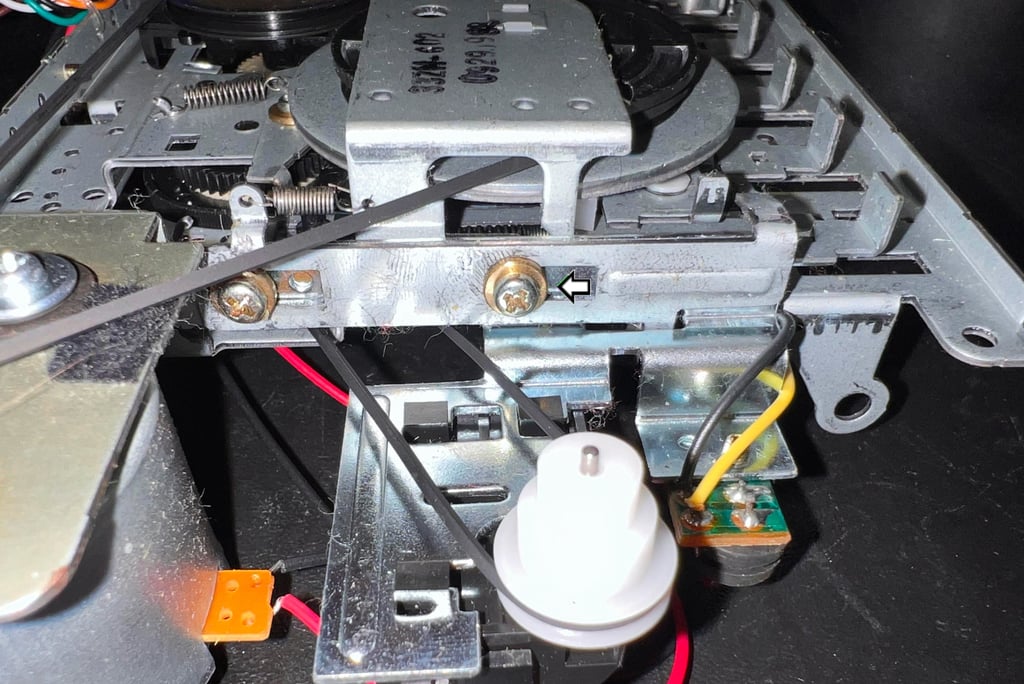

Next, the screw on the top metal lid is partly removed. This will allow for the lid to be tilted and lifted just so the belt can be removed trough the small gap...
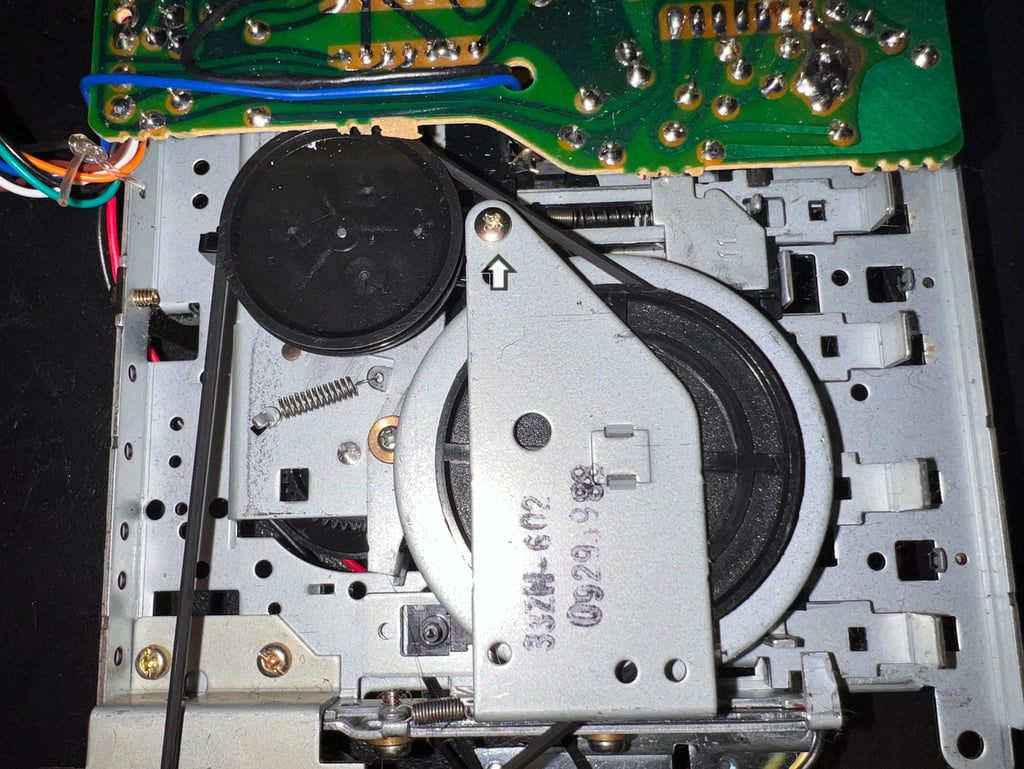

... as can be seen from the pictures below.
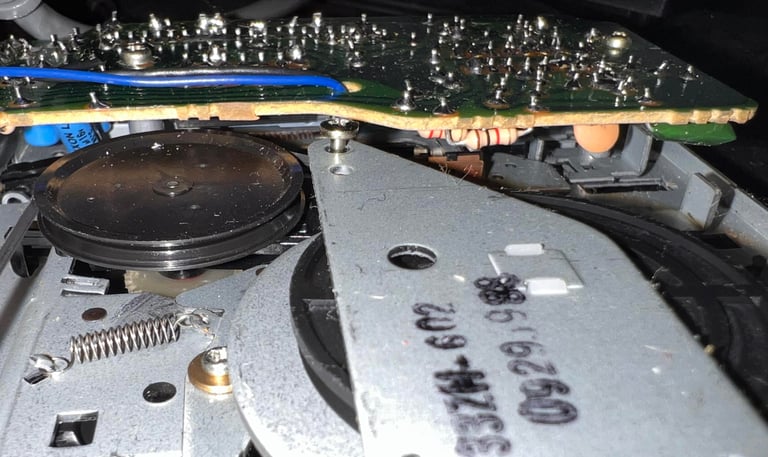

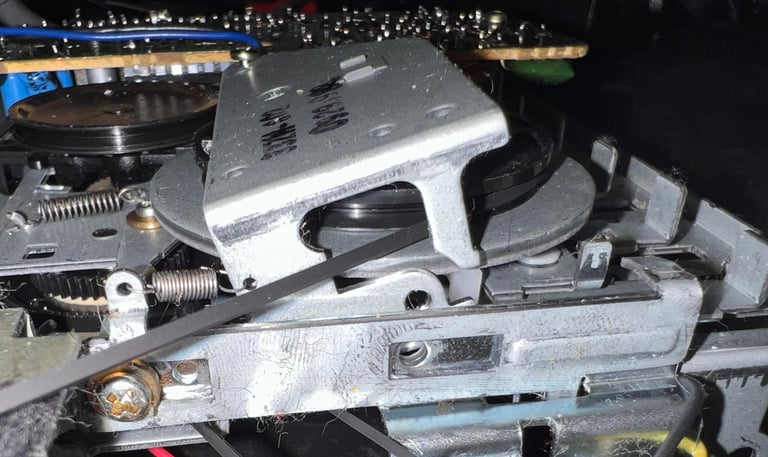

As mentioned the interior looks different from the previously refurbished Noris Data Datenrekorder DR1535. Since it looks more like a normal Commodore 1530 (C2N) datasette I suspect that the belts are also similar to this. Also, the belts appear to be in quite good condition when removed. The elasticity and shape seems to be ok, so I don´t see any reason to change them ("if it ain´t broken don´t fix it"). Testing will prove or disprove that later.
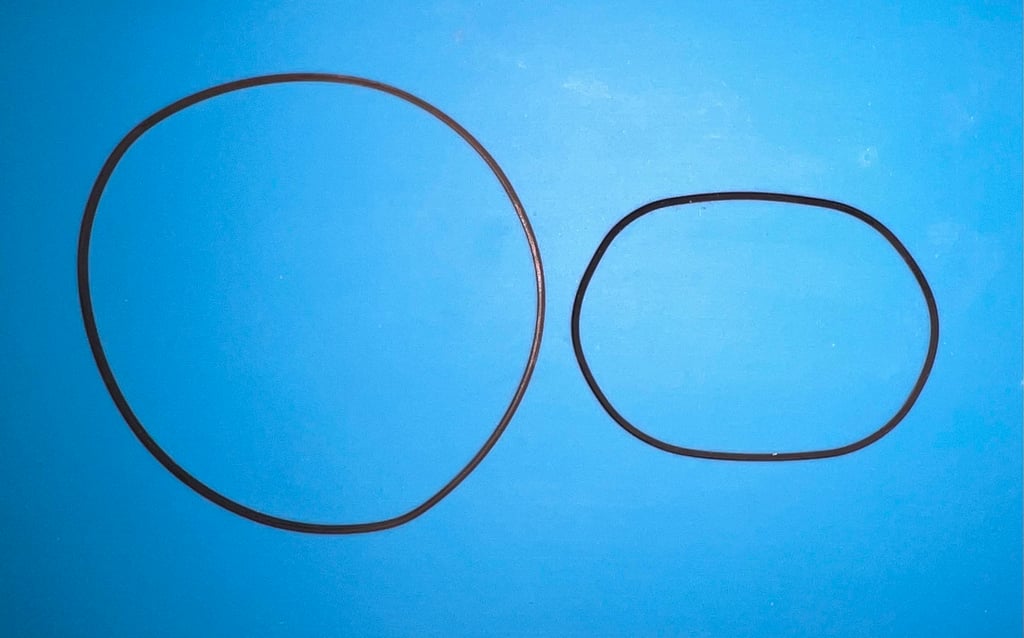

Even if the plan is not to change what seems to be fine belts, they are measured to see if they have the same size as the normal Commodore 1530 (C2N) Taiwan datasette. And with my super-scientific ruler I see that these are the same. See pictures below.




PCB and electrolytic capacitors
The version of the PCB is DM-64C which from the capacitor list contains 3 x 47 uF [16V] electrolytic capacitors. There are no signs of corrosion on the rear of the PCB. It is a bit greasy and sticky, but nothing that should cause any damage - and it can be cleaned off.
To replace the electrolytic capacitors the PCB needs to be lifted from the interior. This is done by first removing the two screws at the rear of the PCB (see arrows).

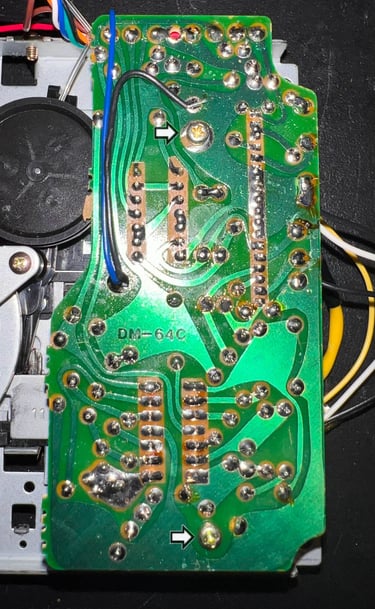
Before the PCB can be lifted the small leaf switch needs to be removed. This is located just below the hole where the black and blue wire enters. With a thin small flat screwdriver the leaf switch is removed. It is important to be careful not to break this since the plastic can be brittle. The blue square in the picture below shows the two holes which the leaf switch is plugged into. In the other picture the leaf switch is shown.

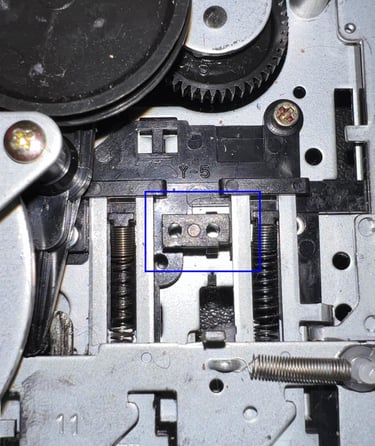
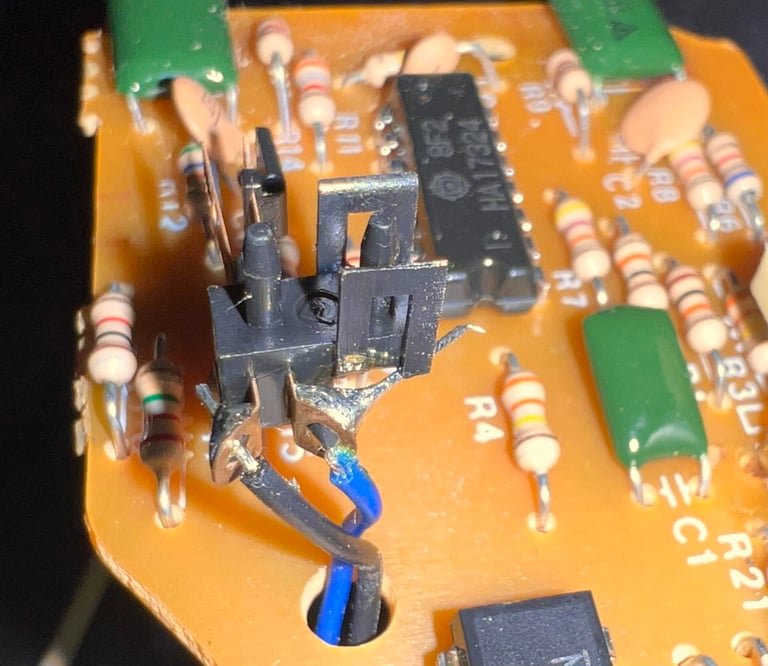

Replacing the three electrolytic capacitors is trivial. Easy to desolder and easy to solder back in. Quality capacitors from Wurth electronics are used. See picture below.
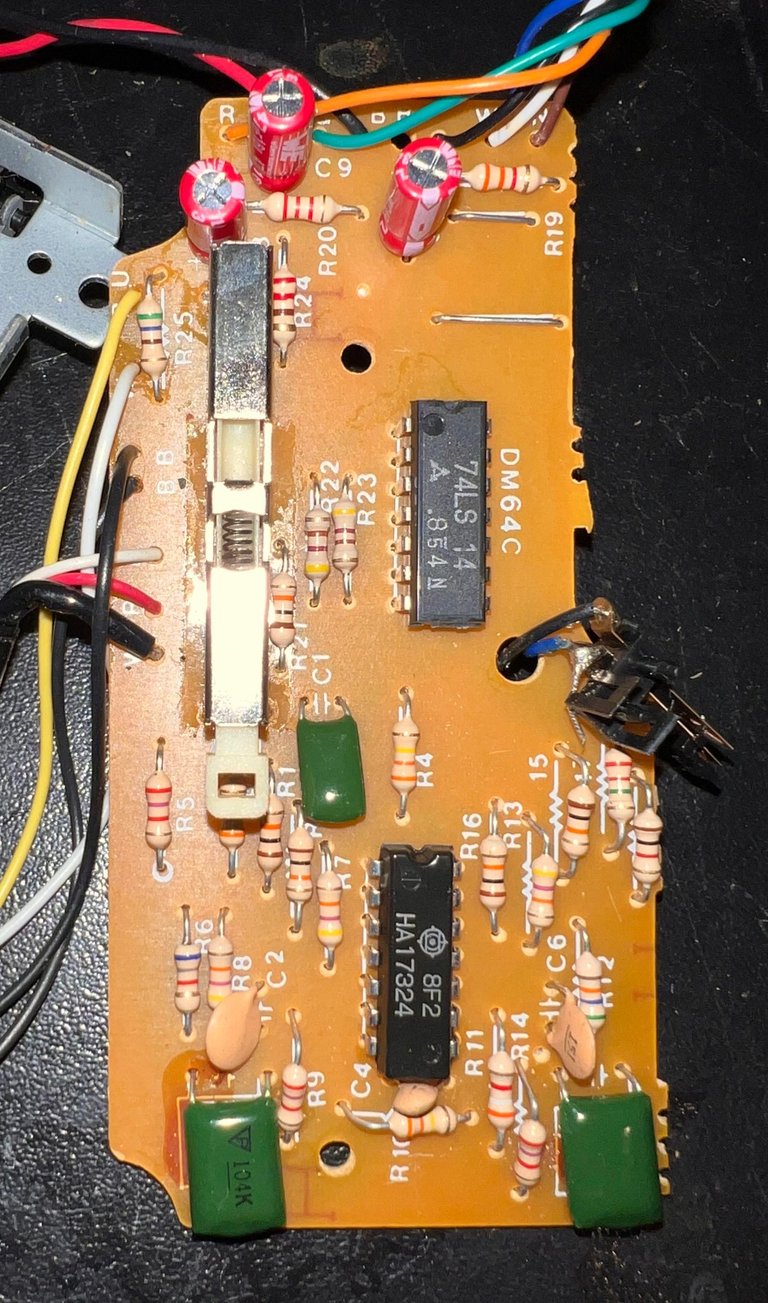

R/W head alignment
In addition to replacing the belts it is crucial to check the read/write (R/W) head alignment and if necessary adjust it. Otherwise the datenrekorder can´t load our beloved tapes without the notorious "?LOAD ERROR", or simply just fails loading.
A detailed article about how I align the R/W head can be found here. As seen in this article I use both an oscilloscope and C64 software to do this operation in two stages:
The first stage I solder on two wires after the 2nd OP-AMP stage, connect the oscilloscope to these wires and then adjust the R/W head until I find the maximum amplitude on the oscilloscope.
Second stage I use cassette-azimuth software running on a Commodore 64 while loading games from tape. In this second stage I do not do any adjustments - I only validate that the adjustment done in the first stage is correct.
Note that the datenrekorder needs to be completely re-assembled when checking, and eventually calibrating, the R/W head alignment.
Stage 1 - Aligning the R/W head with the oscilloscope
The oscilloscope is connected to the two wires soldered to the PCB (DM-64C) as shown in the article and in the picture below.
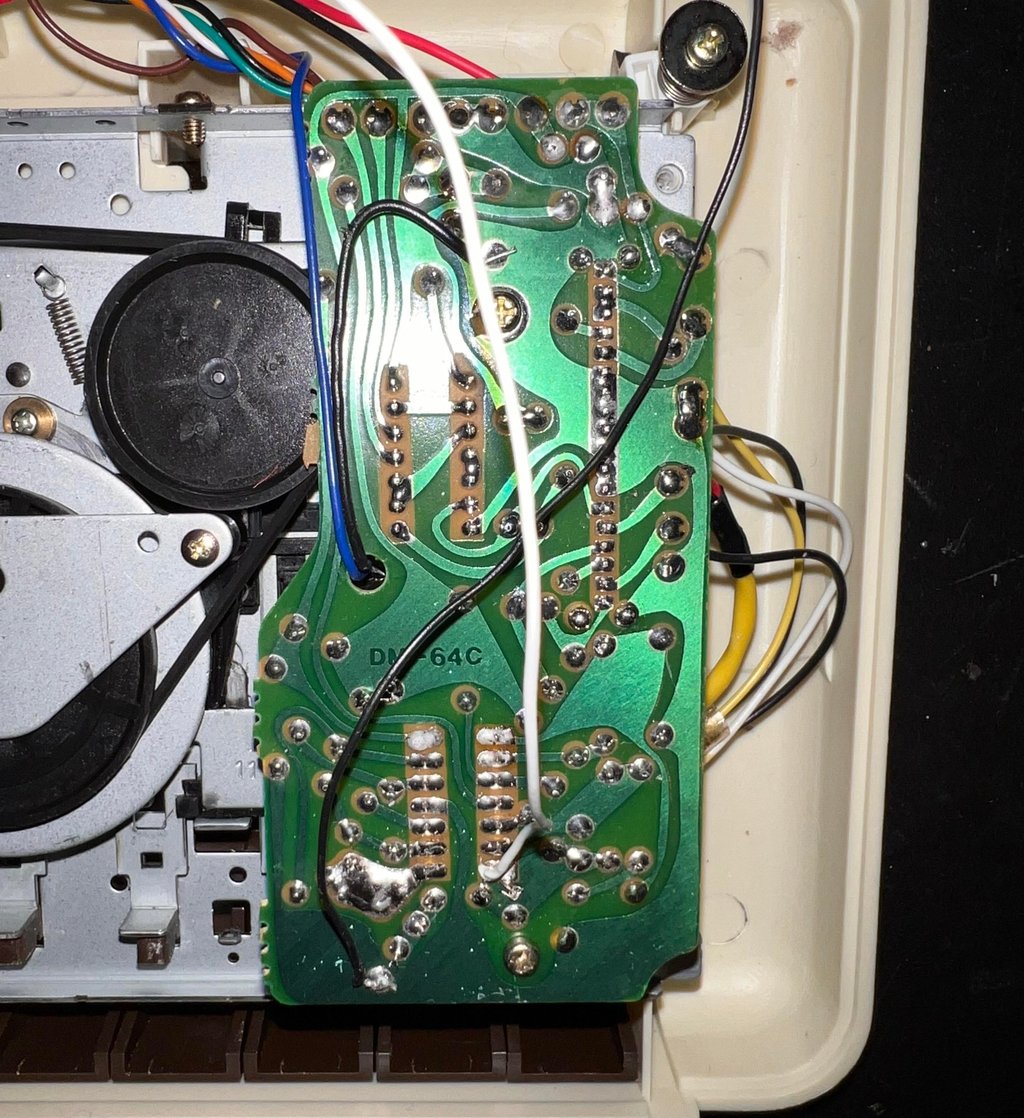

Below is a picture of the measured signal while an original tape is loading. The measured signal amplitude at the 2nd OP-Amp stage is about 0.7 V (1.4 p-p) which should be within acceptable tolerances. Therefore I choose not to adjust the alignment screw at this stage, but if the verification stage (or testing stage) fails I will get back to this stage.


Stage 2 - Verification of the adjustment
To verify the adjustment with a second tool I use the cassette-azimuth software running on a Commodore 64. When the tape is loading there should appear three vertical bars on the screen. And the goal is that these three lines are as "solid" as possible. Note that these lines will never be completely solid, but the goal is that they are more or less straight vertical lines. If you have a misaligned R/W these lines will be scattered all over the screen.
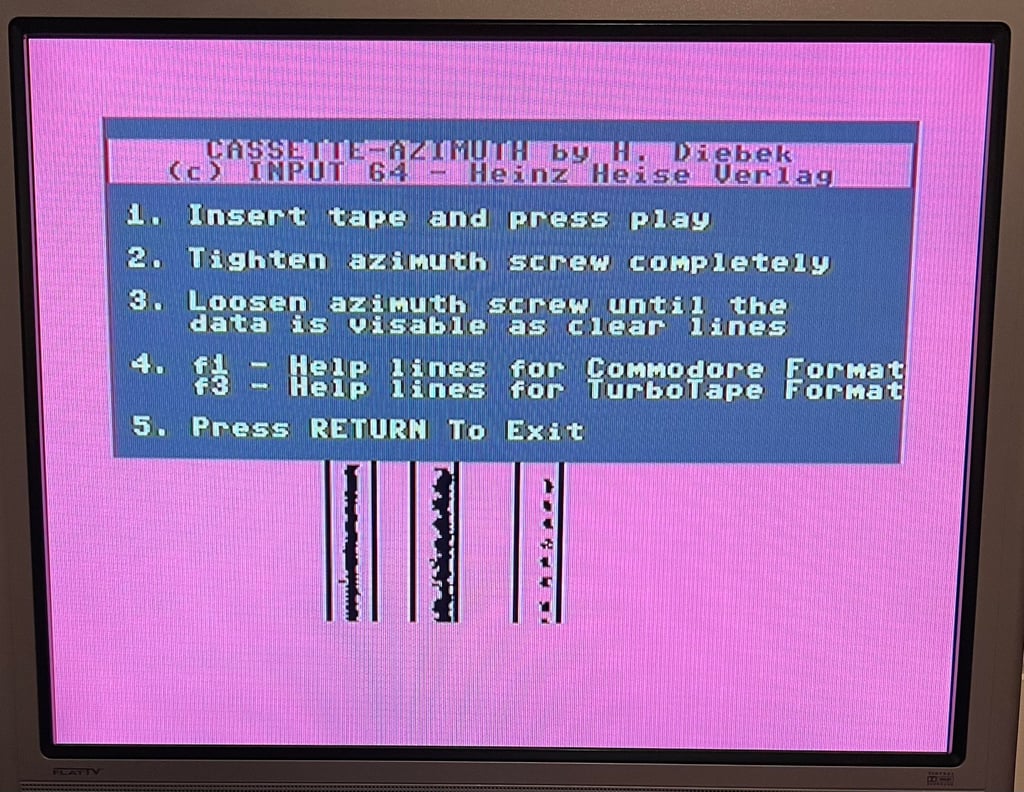

Tape speed
Lately I have begun to check the speed of the tape playback. I am still a newbie in this area, but I think there is value in checking the playback speed.
The idea is smart, but simple:
A professional Speed Calibration Audio cassette which contains a 3150 Hz sinewave recording is loaded in the datasette. During playback of this tape a software (developed by J. Deorgee) reads the registered frequency on a Commodore 64. The idea is to adjust the speed until the recorded frequency, 3150 Hz, is measured.
Note that this great idea is not mine. The idea is based on a magnificent article by Jan Derogee and his Tape Frequency Counter software.
My experience so far is that the datasette (or datenrekorder) works best when the playback speed is in the range between 3150 - 3250 Hz. You could argue that the speed should be as close to 3150 Hz as possible, since this is the expected speed/frequency reading, but for reasons I have not understood yet I see that the tape deck works better with a slightly higher speed. I will continue to do these readings when refurbishing datasettes/datenrekorder to see if I can learn something!
As can be seen from the picture below the speed is bout 3180-3190 Hz, so I don´t see any need to adjust the speed at the moment.
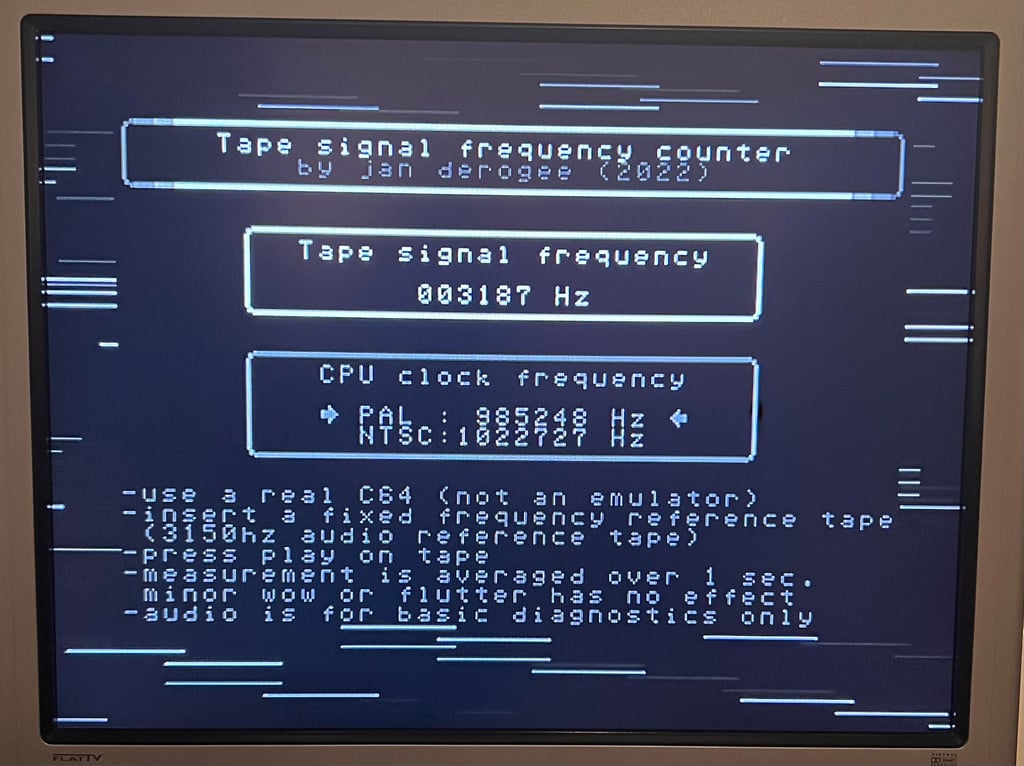

Testing
Playback
To make sure now works as it should I select six original C64 games to be used for testing. Even if these games are old and worn the load without any problems at all. Below is a picture gallery from the testing.
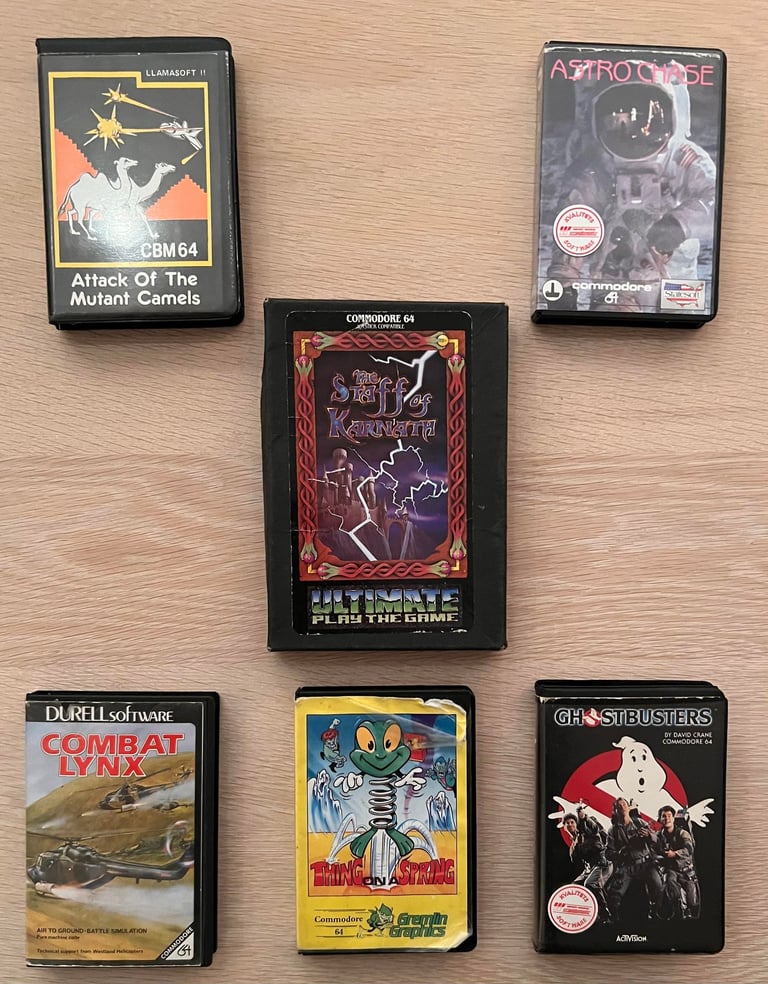


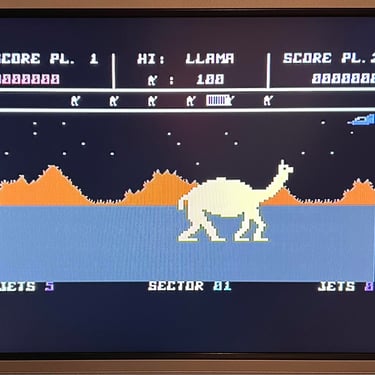
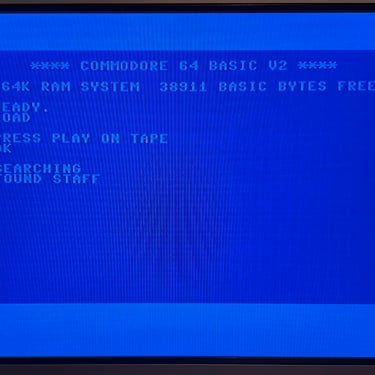
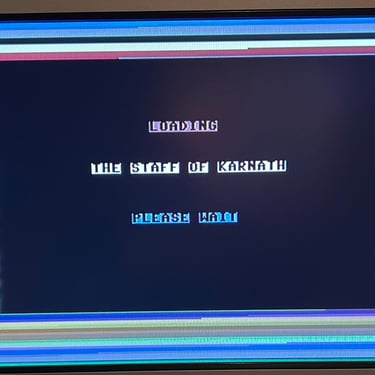


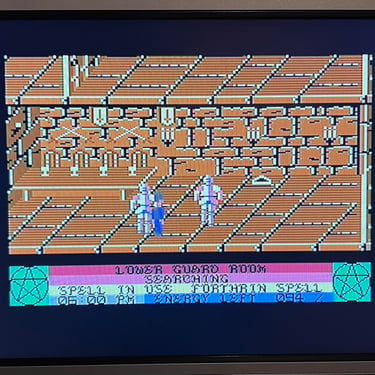
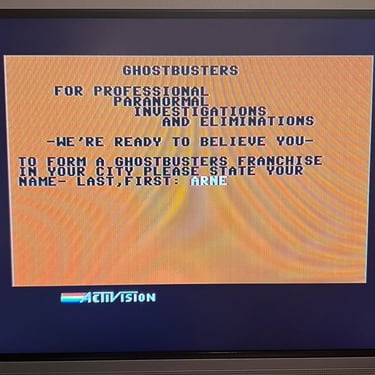

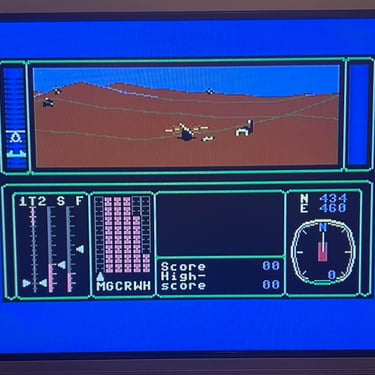

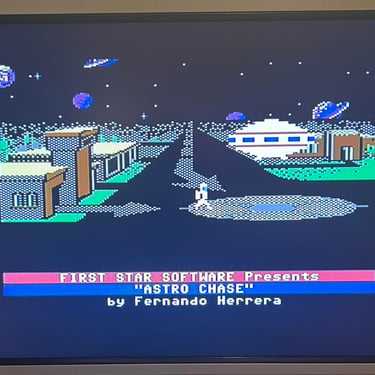


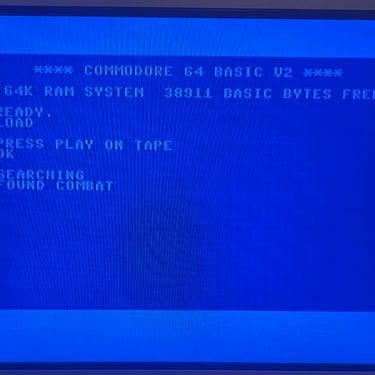
Recording
The saving functionality is also checked and verified. A small BASIC program is made and the SAVE command is used (and then the program is re-loaded). The LED is also on while recording is in progress.
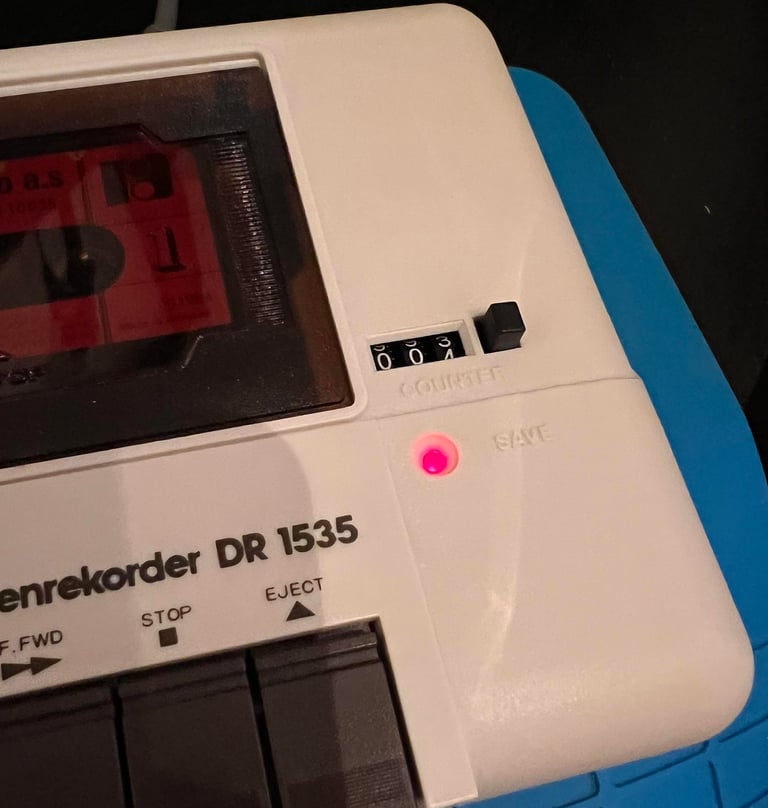

Final result
"A picture worth a thousand words"
Below is a collection of the final result from the refurbishment of this datenrekorder. Hope you like it! Click to enlarge!
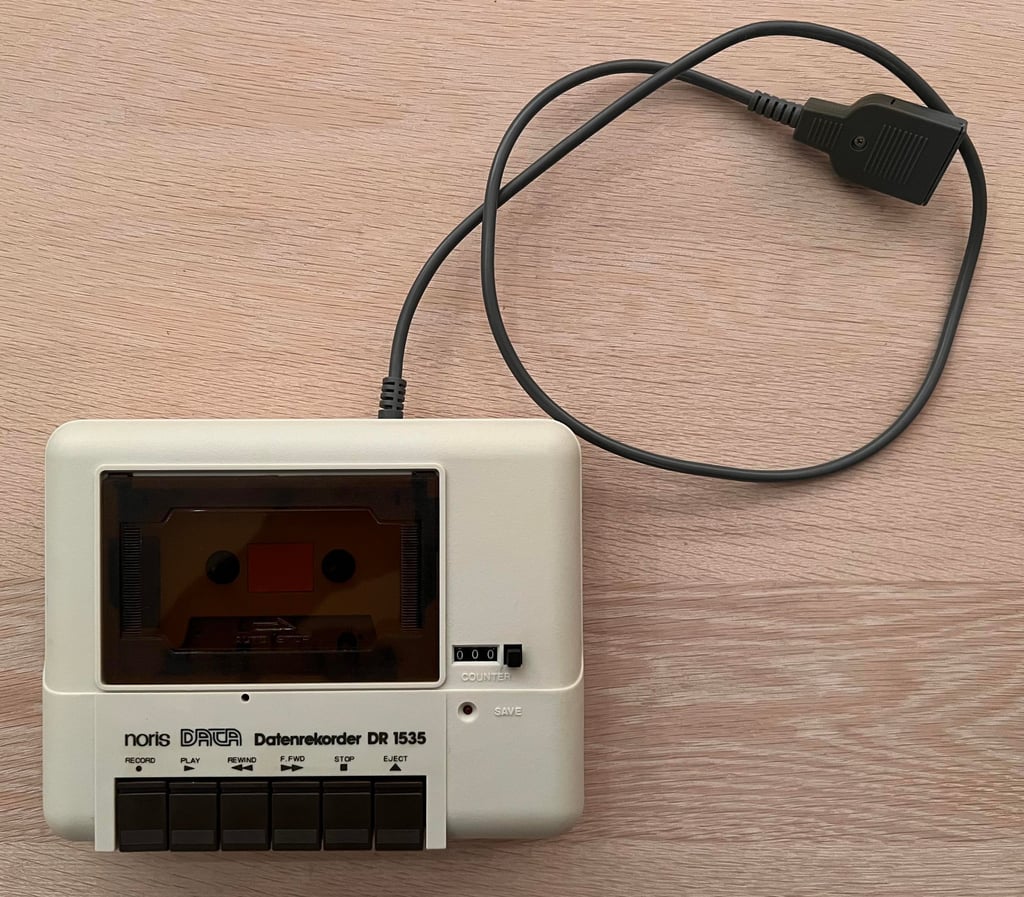

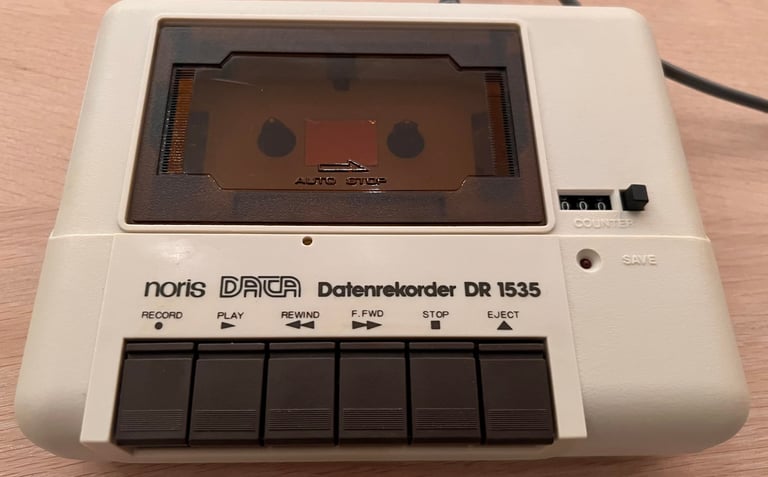

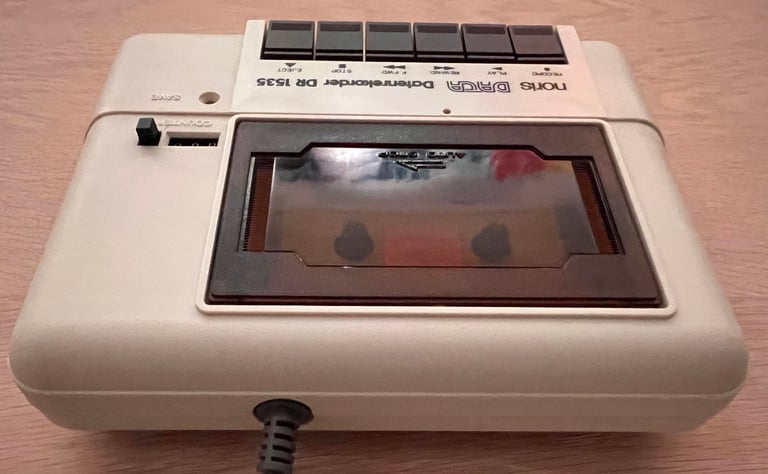

"Are you keeping up with the Commodore? 'Cause the Commodore is keepin up with you!"
Below are some pictures of the Noris Datenrekorder DR 1535 back at the customer´s home!
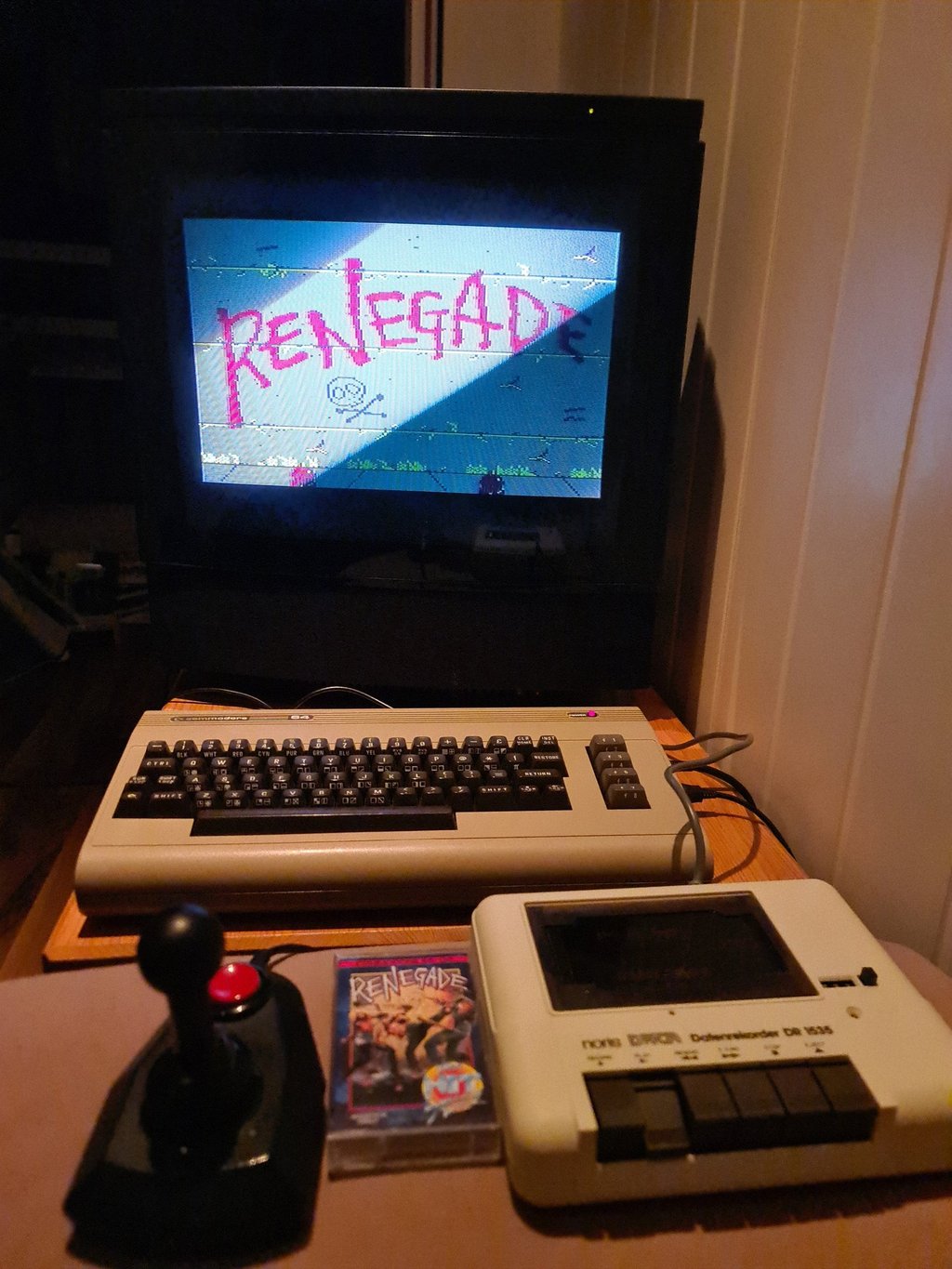

Banner picture credits: VİLDAN-ATİLA GÖKÇEN CALCULATOR & COMPUTER & RETROTECH MUSEUM
